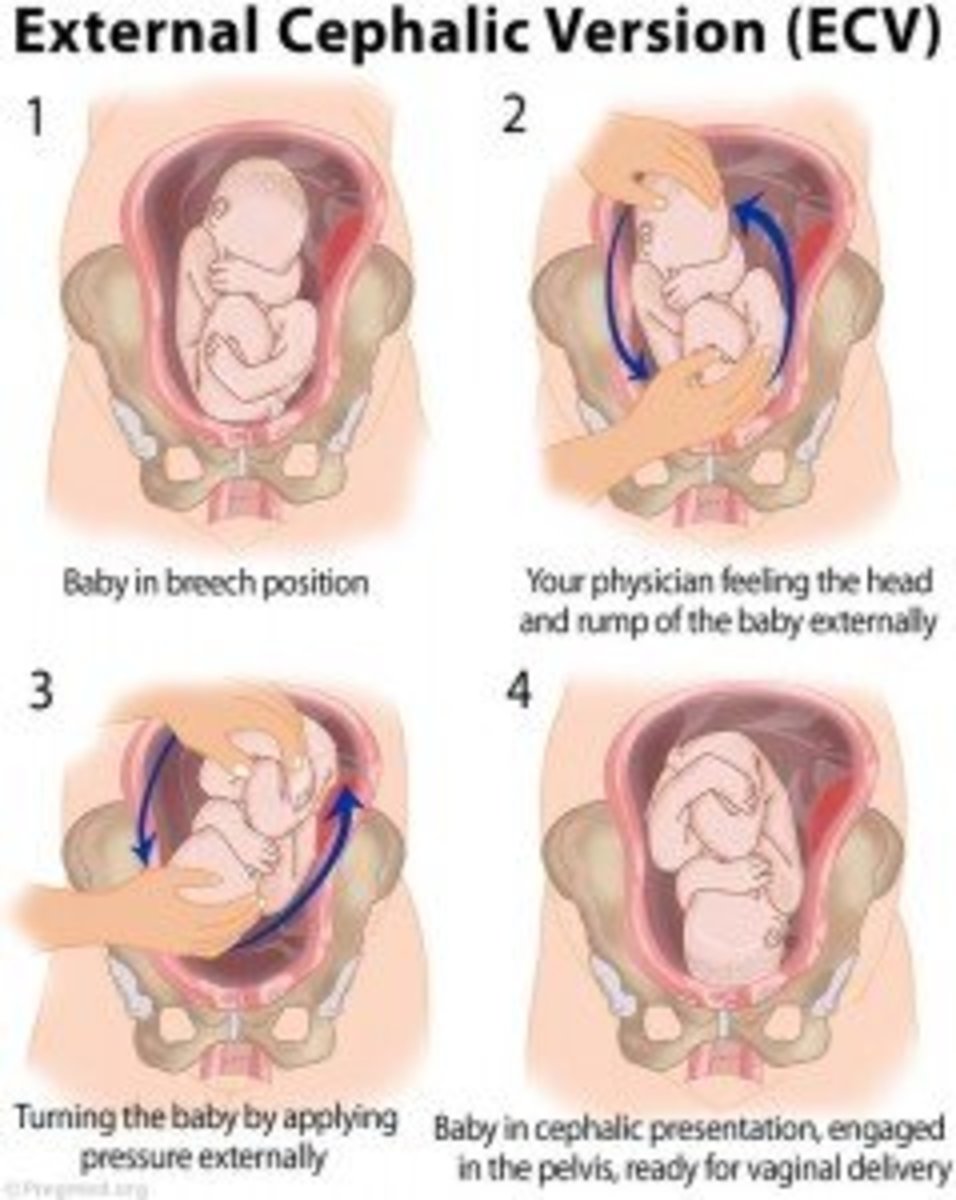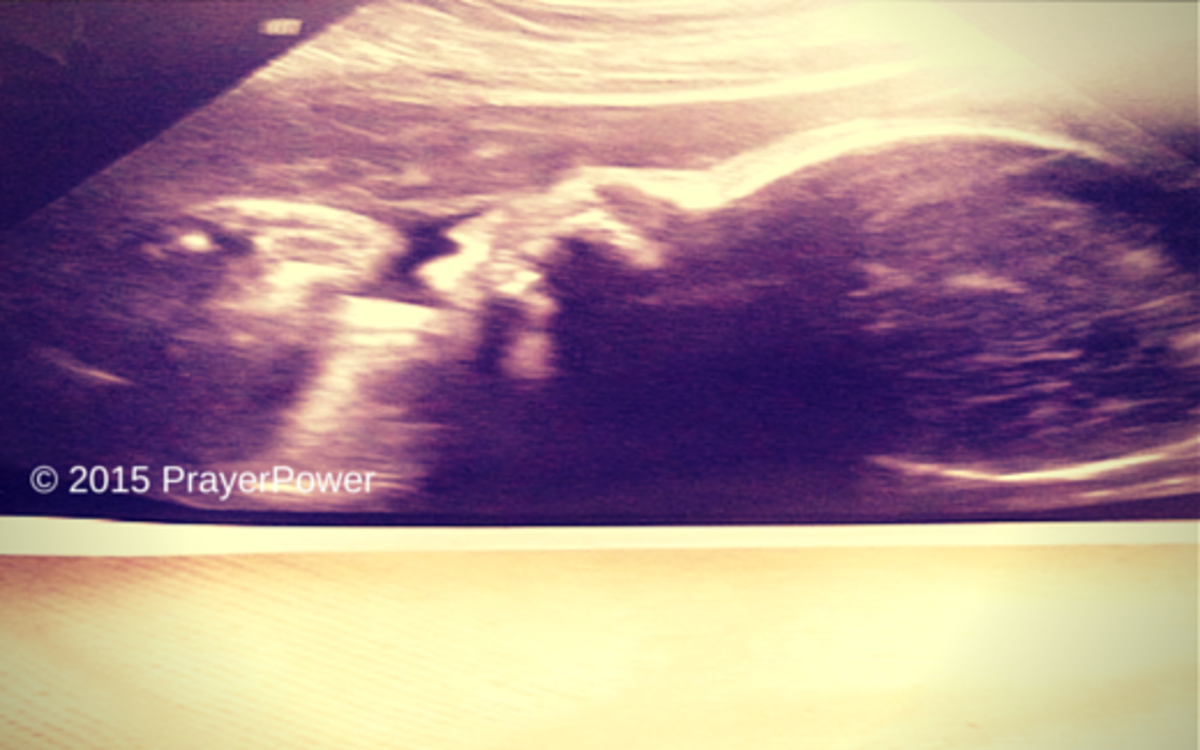- HubPages»
- Health»
- Women's Health»
- Pregnancy
Miscarriage and Pregnancy Loss
Ultrasound in Early Pregnancy
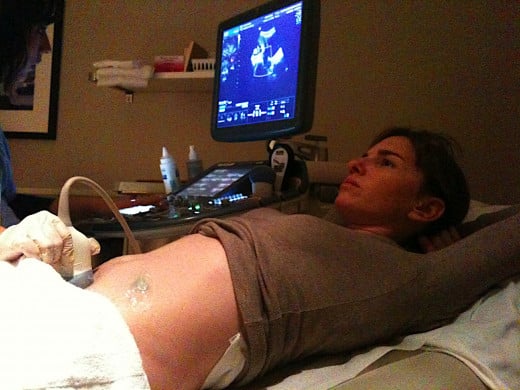
Early Pregnancy Loss
Pregnancy loss is devastating to parents-to-be, causing a great deal of grief and questions concerning the cause of the miscarriage. Many pregnancies are lost in the earliest stages due to genetic problems in the embryo. These losses are often termed "chemical pregnancies," and as many as half of all pregnancies end by the time a woman would have expected her menstrual cycle. Many of these women would not have known they had conceived - the increased use of early pregnancy tests allows many women to know they are pregnant at extremely early stages.
Once a pregnancy has been identified, the typical miscarriage rate is about 15%. The rate is higher for women who are 35 years of age or older.
The good news is that the vast majority of women will go on to have a healthy, full-term pregnancy after experiencing a first miscarriage. Over 85% of women who lose a baby in early pregnancy will have a healthy pregnancy the next time they conceive. A small proportion of women will experience repeated miscarriages, and will need further evaluation to determine the cause behind the recurrent pregnancy losses.

Pregnancy After Miscarriage: When Should You Tell?
Miscarriage Symptoms
Bleeding is the most common sign of a threatened miscarriage. Spotting or bleeding does not mean that a miscarriage will happen, only that it may happen. Approximately 50% of women who have spotting in early pregnancy will go on to have healthy babies, while the other half will experience a loss.
Bleeding with cramps often indicates an impending miscarriage, particularly if the bleeding is heavy. All bleeding should be reported to a healthcare professional immediately. Sometimes the bleeding is due to implantation or other benign causes, but further testing should be performed to determine if the pregnancy is viable.
The passage of clots or other tissue generally indicates a miscarriage is underway. If this happens, an exam will be performed to determine if the cervix is open or closed. An ultrasound will be performed to assess the status of the embryo and any tissue remaining in the uterus.

Pregnancy Loss Poll
When did your miscarriage occur?
Causes of Miscarriage
In early pregnancy, the cause of most miscarriages is a genetic problem in the developing embryo. Chromosomal problems prevent the embryo from developing appropriately, and the pregnancy eventually ends in loss. Other causes of early miscarriage include:
- Low hormone production by the mother (particularly progesterone).
- Infections during pregnancy.
- Physiological or anatomical problems with the uterus.
- Exposure to toxins in early pregnancy.
- Poor implantation of the embryo into the uterine wall.
- Autoimmune disorders.
- Rh factor incompatibility (the mother is Rh negative, and the baby is Rh positive).
- Blood clotting disorders.
Losses in later pregnancy may occur due to uterine rupture, placental separation from the uterine wall, congenital anomalies, or infection.

Miscarriage Risk is Reduced in the Second Trimester
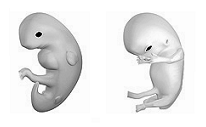
Miscarriage Statistics
The rate of miscarriage for a typical pregnancy is around 15%, once the pregnancy has been identified (gestational sac observed on ultrasound). Women who have experienced a prior miscarriage have a higher probability of experiencing another: approximately 1-2% of women will have problems with frequent miscarriages (3 or more in a row). More than 85% of women will go on to have a healthy pregnancy after experiencing an early pregnancy loss.
Women who are 35 years or older have an increased chance of miscarriage - the rate may be as high as 30% for women 35-39 years of age. The rate increases to nearly 50% for women who are 40-44 years of age.
Once an embryo's heat beat has been observed, the chance of losing the pregnancy drops to approximately 9% at 6 weeks, and to 1.5% at 8 weeks. By the time the pregnancy reaches the second trimester, the chance of miscarriage is less than 1%.

Misdiagnosed Miscarriage
Some women may be diagnosed with a "missed miscarriage" and then go on to have a healthy pregnancy. This generally occurs at an early pregnancy stage, when the dates are miscalculated. If the physician calculates that a woman should be 7 weeks pregnant and does not see a fetal heart beat, an impending miscarriage may be diagnosed. If the woman's' "dates" are off (due to late ovulation or imprecise knowledge of her last menstrual period), she may only be 5 weeks pregnant and a fetal heart beat would not be expected at this stage. If there is concern about the actual age of the embryo, a repeat scan should be scheduled for a week or so after the first scan to confirm the age of the embryo.

Conceiving After a Loss
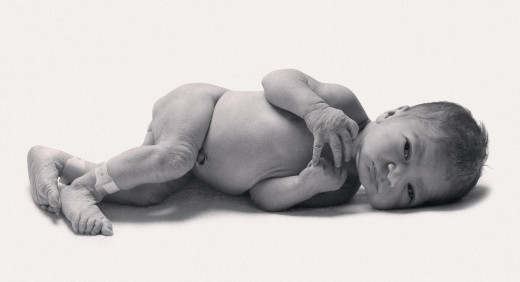
Pregnancy After Miscarriage
The vast majority of women will go on to conceive healthy pregnancies after a first miscarriage. Many physicians will advise waiting 2-3 cycles after a miscarriage to allow the uterine lining to return to a normal state before attempting to conceive again. Other physicians will not give any "wait time" restrictions and will allow a couple to start trying to conceive during the next cycle.
It is normal to feel anxious, uncertain, and worried about a pregnancy after a loss. If a second (or third) miscarriage occurs, consult your physician to determine if additional testing needs to be performed. Blood group status, clotting factor analysis, autoimmune factors, genetic analysis, and other tests may reveal the cause behind repeated miscarriages.
Types of Miscarriage
Type
| Explanation
| Symptoms
| Treatment
|
|---|---|---|---|
Blighted Ovum
| An egg is fertilized, but the embryo never develops. An empty gestational sac will be visible on ultrasound.
| Symptoms such as morning sickness and other pregnancy symptoms may never develop. There may be no obvious sign of a blighted ovum until an ultrasound is performed.
| A procedure known as a Dilation and Curretage (D&C) will be performed. Some women may opt to see if the miscarriage will occur naturally.
|
Chemical Pregnancy
| An egg is fertilized and a home pregnancy test is positive, but a menstrual cycle arrives on time (or a few days late). The early embryo does not completely implant and stops developing, usually at a gestational age of < 4 weeks.
| A positive pregnancy test followed by a menstrual cycle.
| No treatment is required.
|
Missed Miscarriage
| The pregnancy appears to be carrying on in a normal fashion, but a first trimester ultrasound fails to detect a fetal heart beat. The developing embryo died, but a miscarriage did not occur.
| Pregnancy symptoms like morning sickness or breast tenderness may decrease. Otherwise, there is no obvious sign that something is amiss.
| A D&C is generally performed. Some women may opt for a cream or suppository that will induce miscarriage.
|
Threatened Miscarriage
| The embryo is still developing, but some bleeding or cramping may be noticed.
| Spotting, slight cramping, and a closed cervix are hallmarks of a threatened miscarriage. 50% of women who spot in early pregnancy will go on to have healthy babies.
| Watchful waiting. Half of all women will go on to have healthy pregnancies. Blood work (including beta hCG levels) and ultrasound may be used to monitor the pregnancy.
|
Impending Miscarriage
| The embryo has died, or the uterine lining begins to shed.
| Significant bleeding (enough to fill a pad), cramping, and passing clots. The cervix is open.
| Some women will opt to miscarry naturally, others will be offered a D&C.
|
Incomplete Miscarriage
| The embryo or fetus has died and some of the tissue has passed from the womb. Some tissue remains in the uterus.
| Bleeding and cramping for longer than 2 weeks. A uterine infection may occur. Fetal tissue may be seen in the uterus on ultrasound.
| A D&C is generally performed.
|
Complete Miscarriage
| The embryo or fetus has completely miscarried - there is no sign of pregnancy via ultrasound. hCG levels return to normal.
| Heavy bleeding and cramping, passage of clots or fetal tissue.
| No treatment is required.
|

